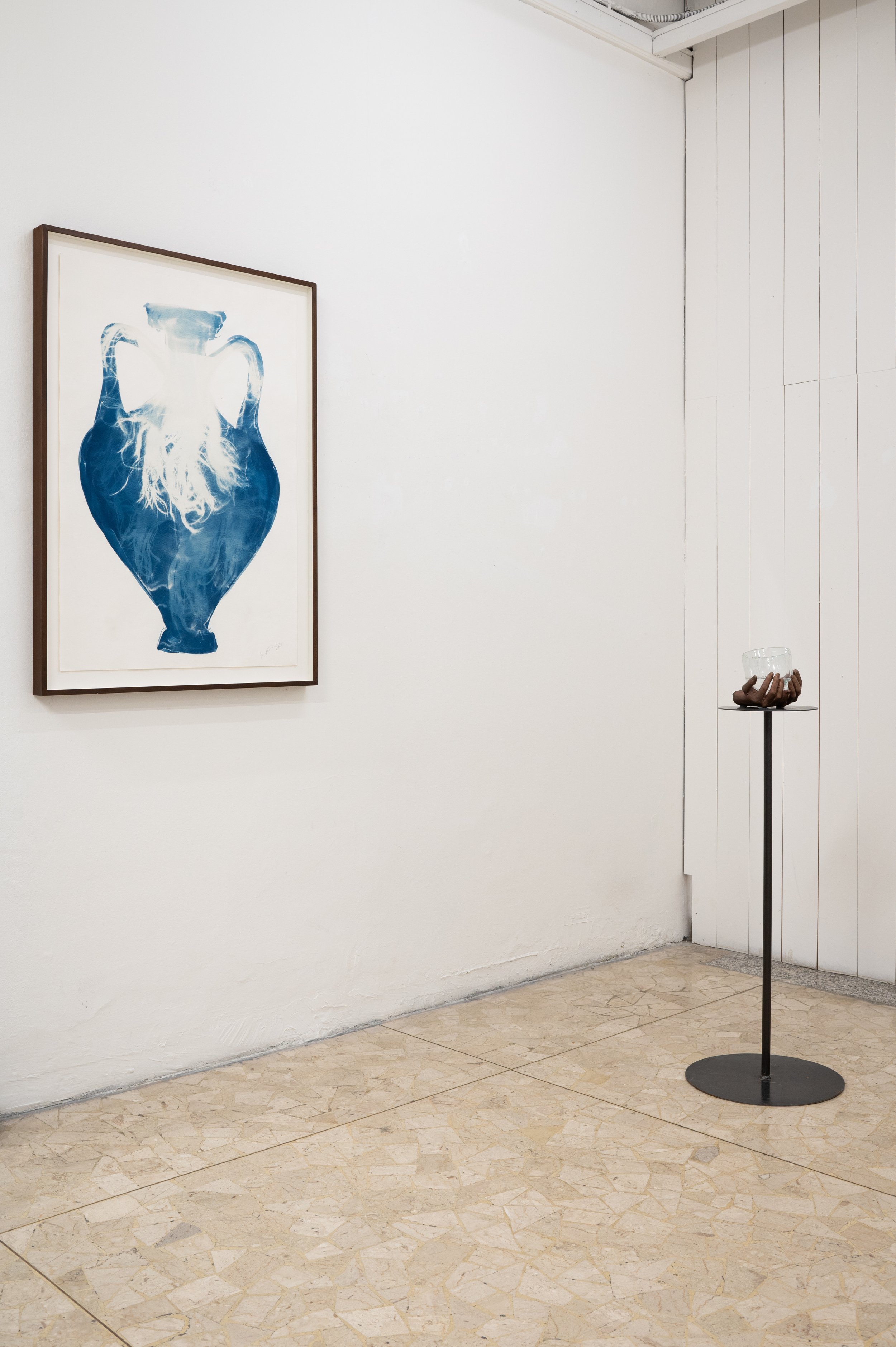
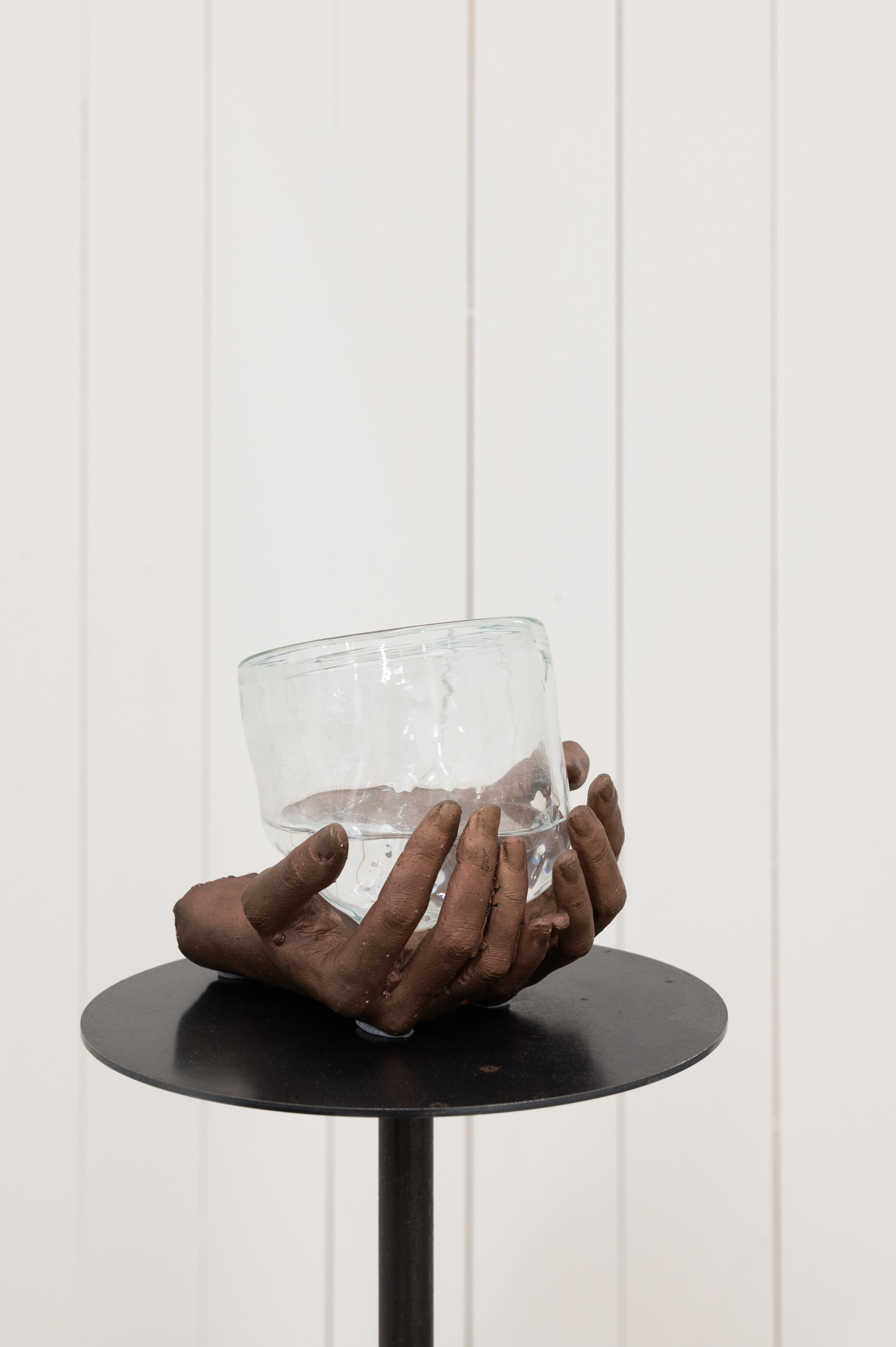
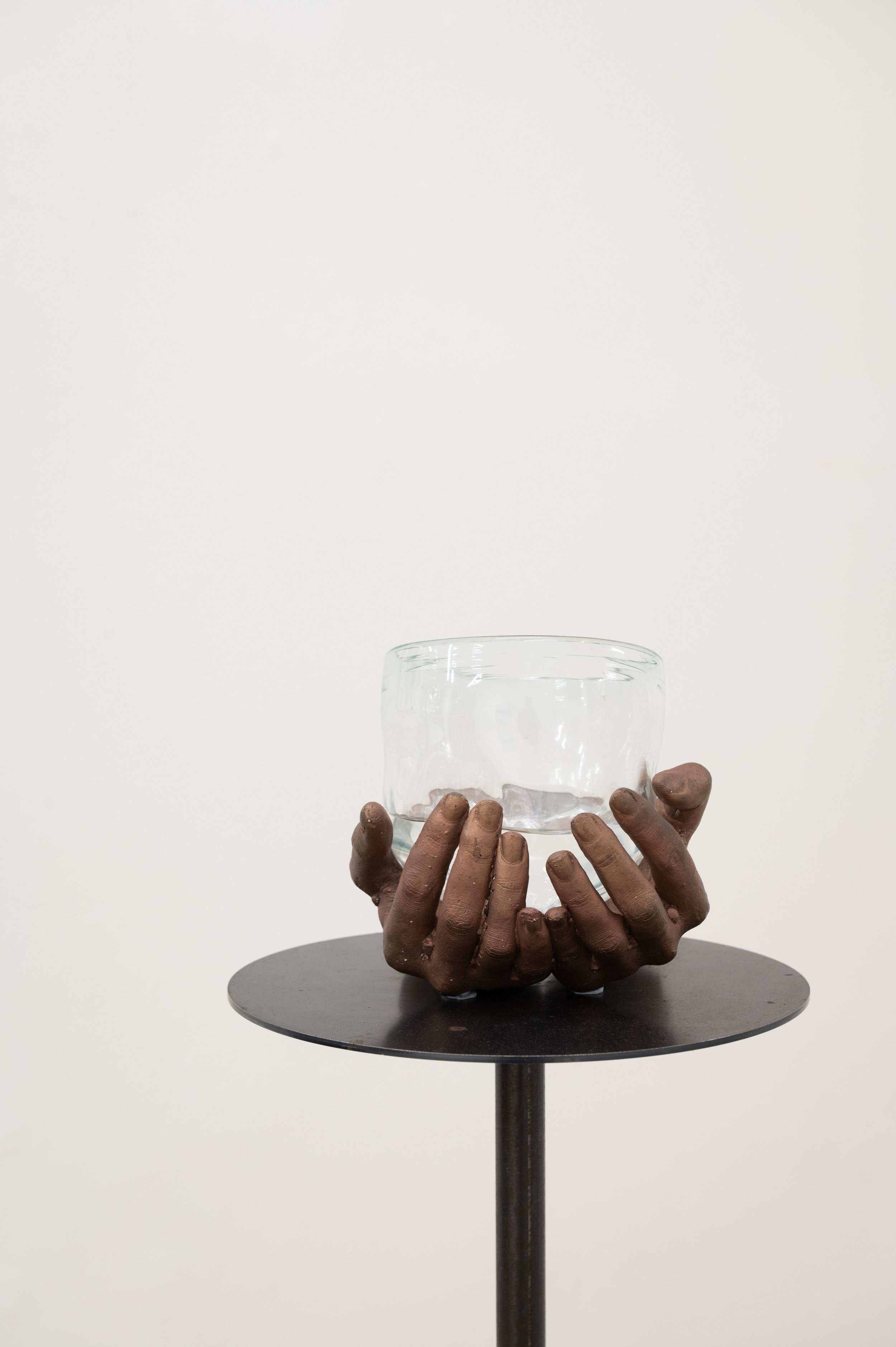
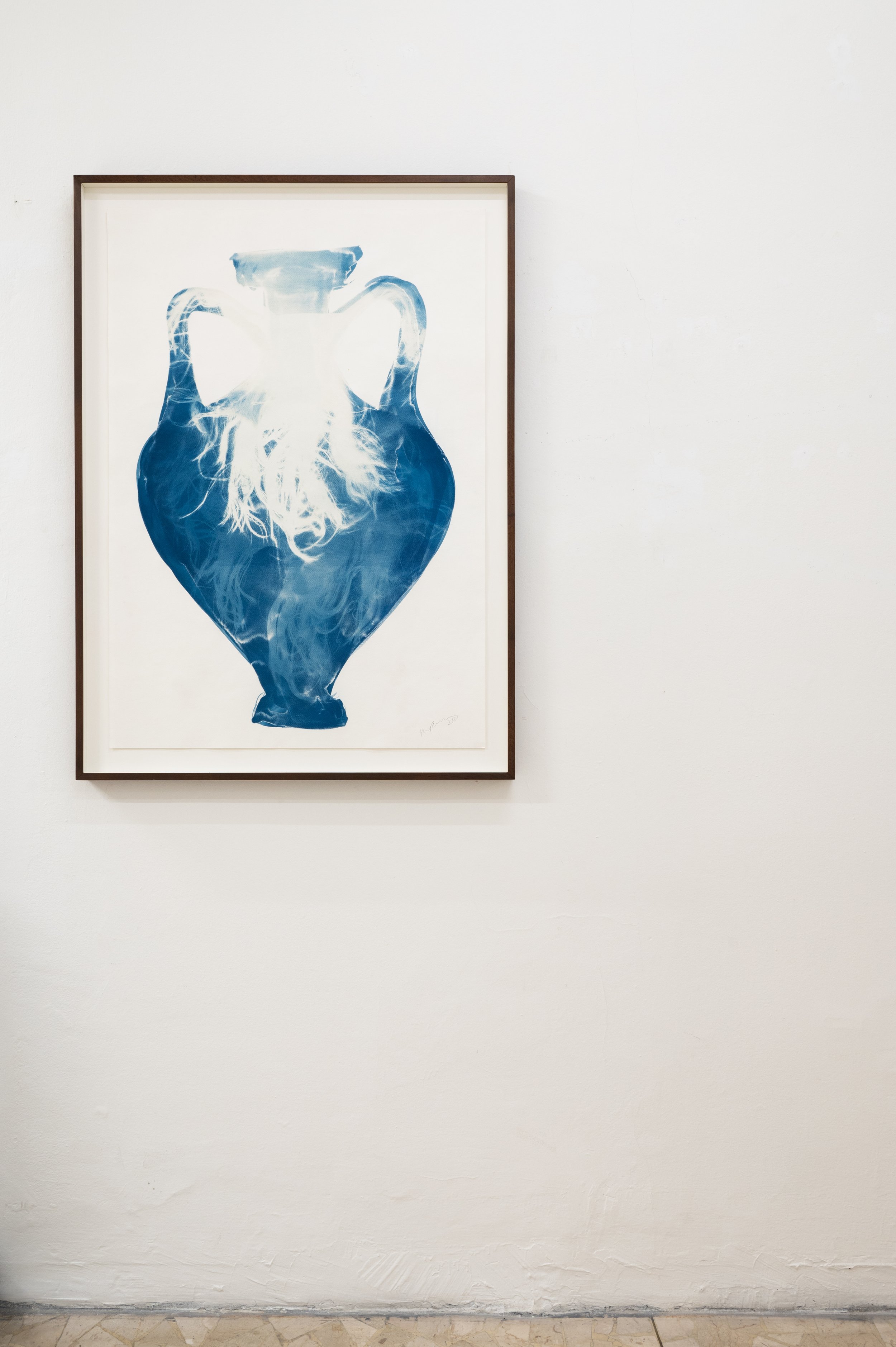
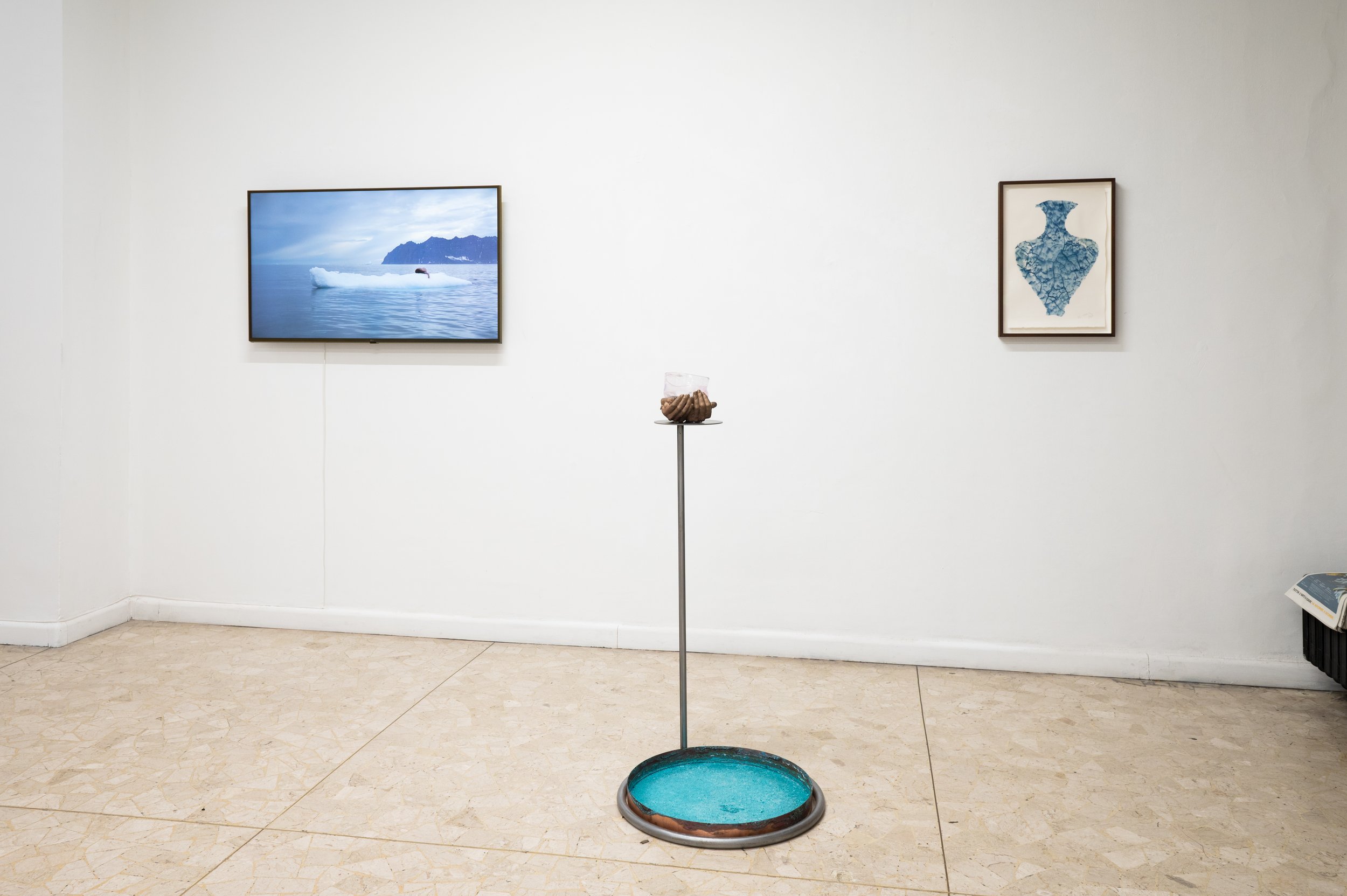
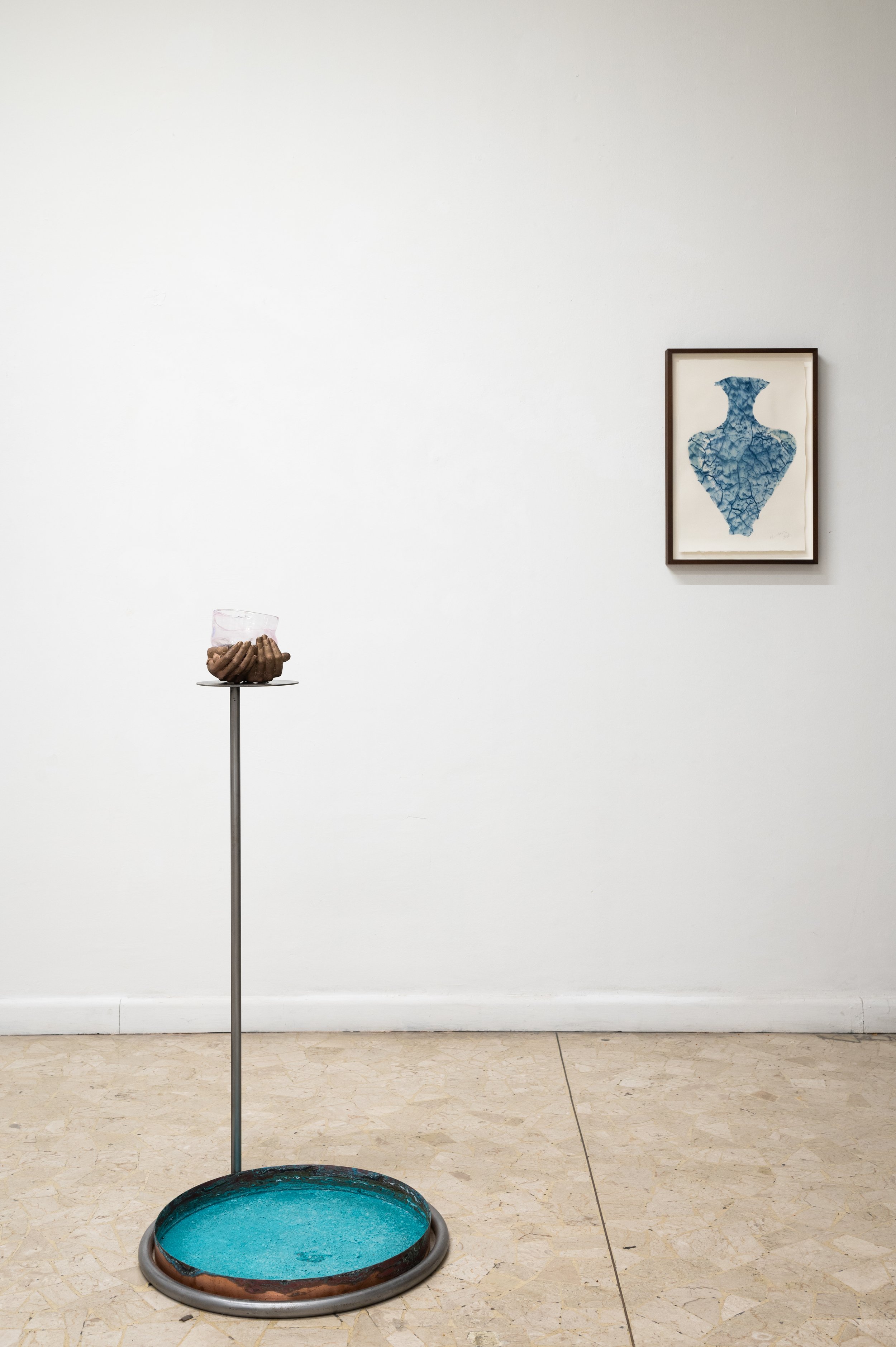
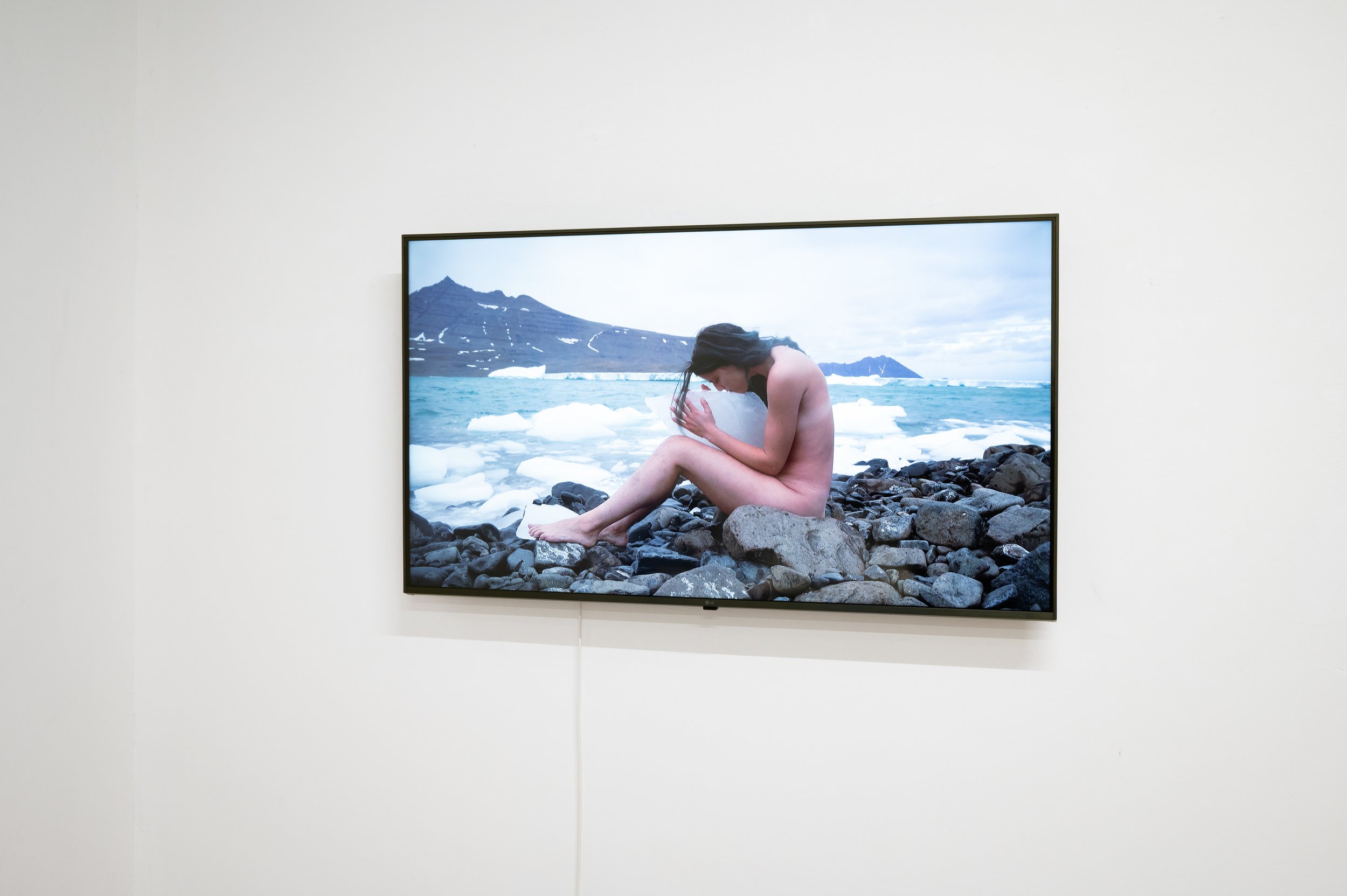
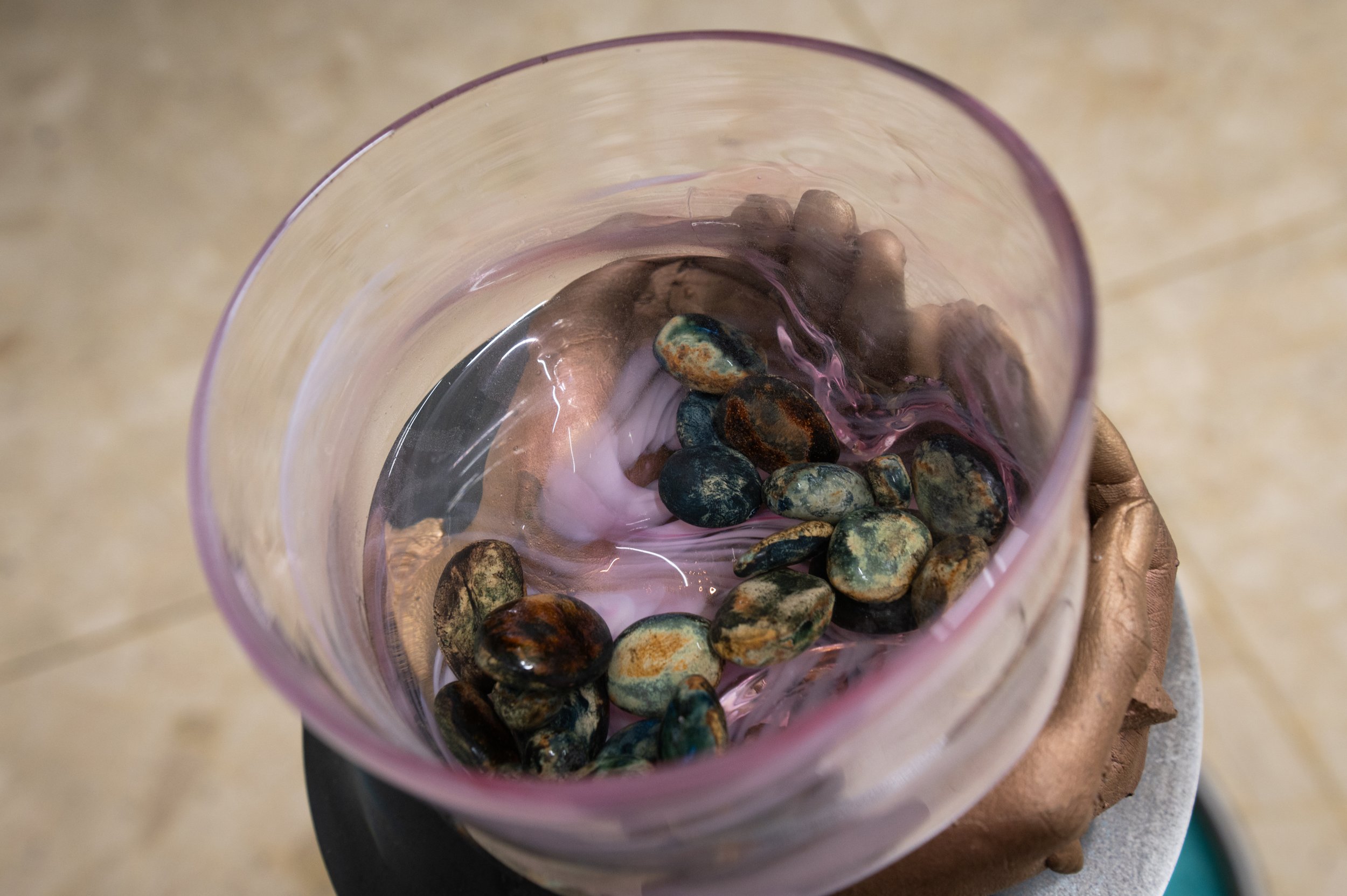
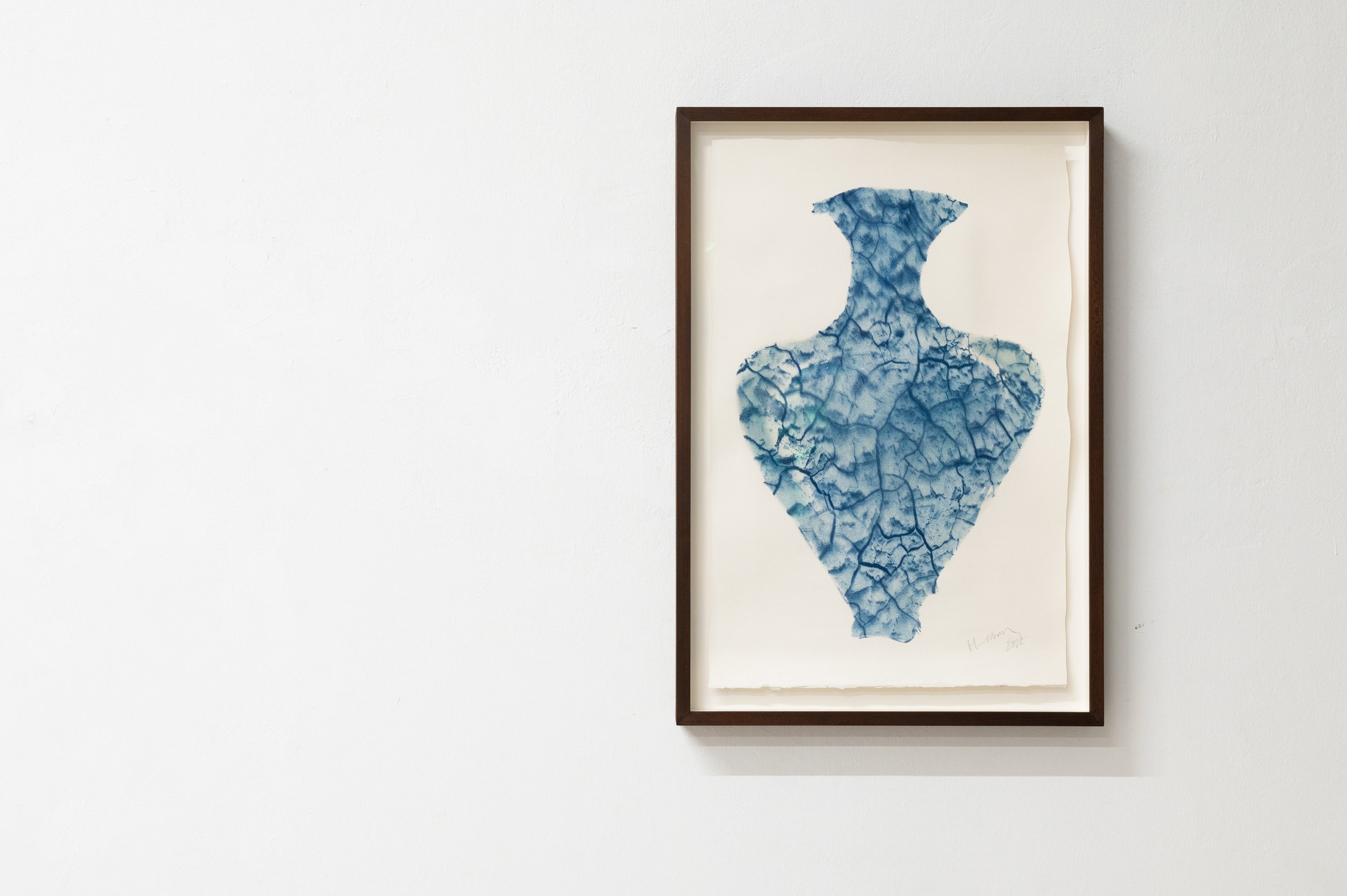
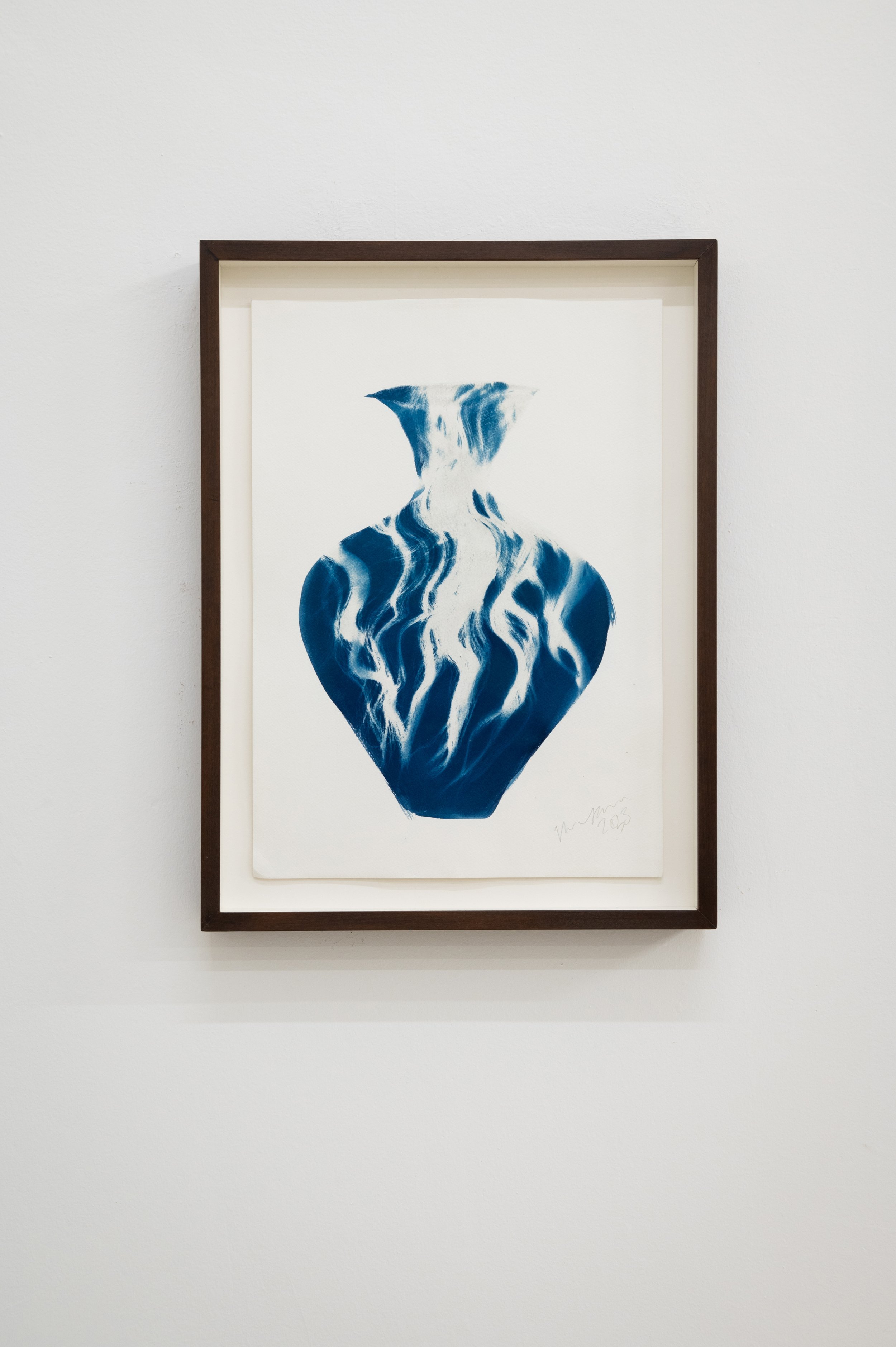
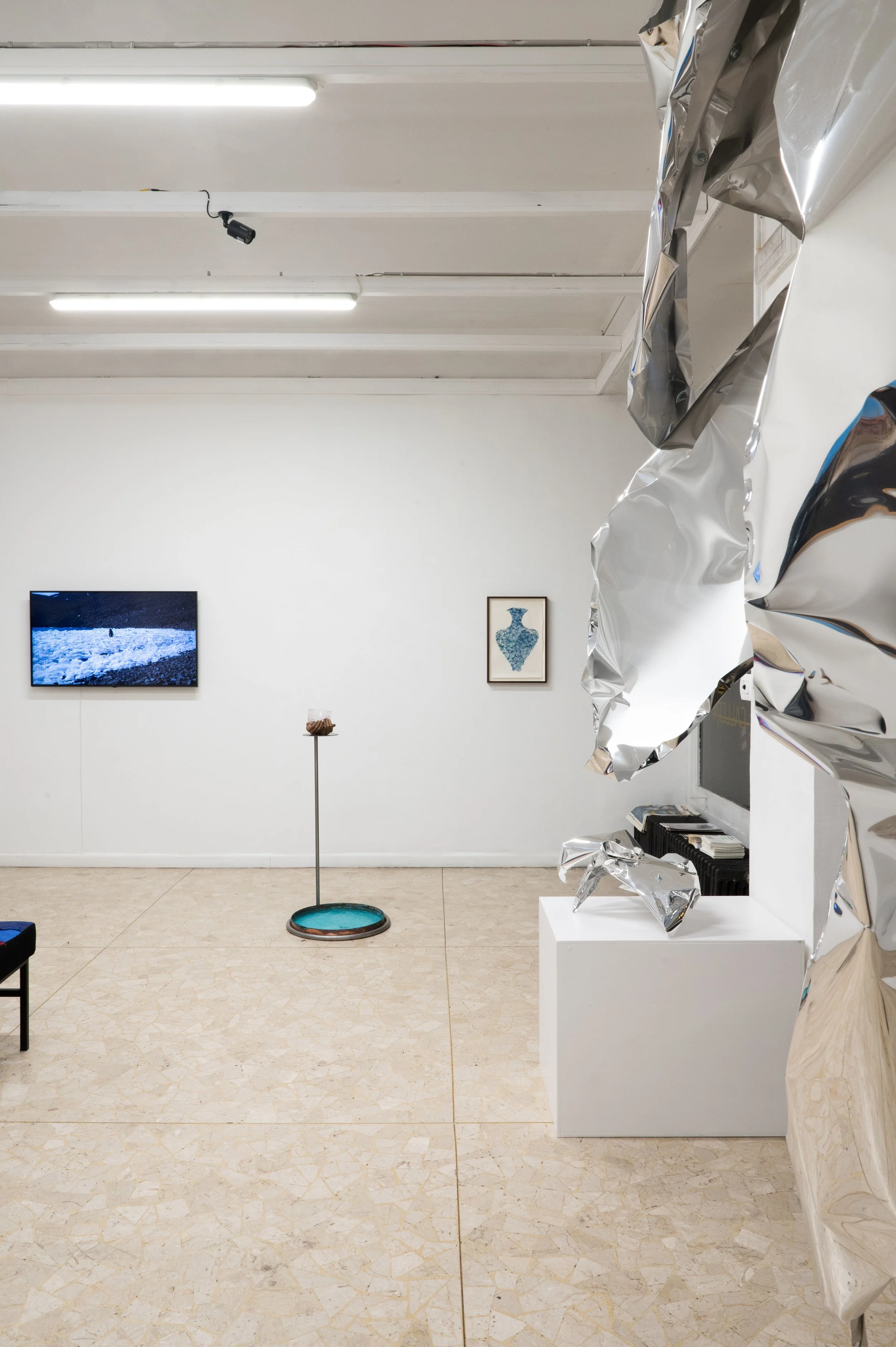
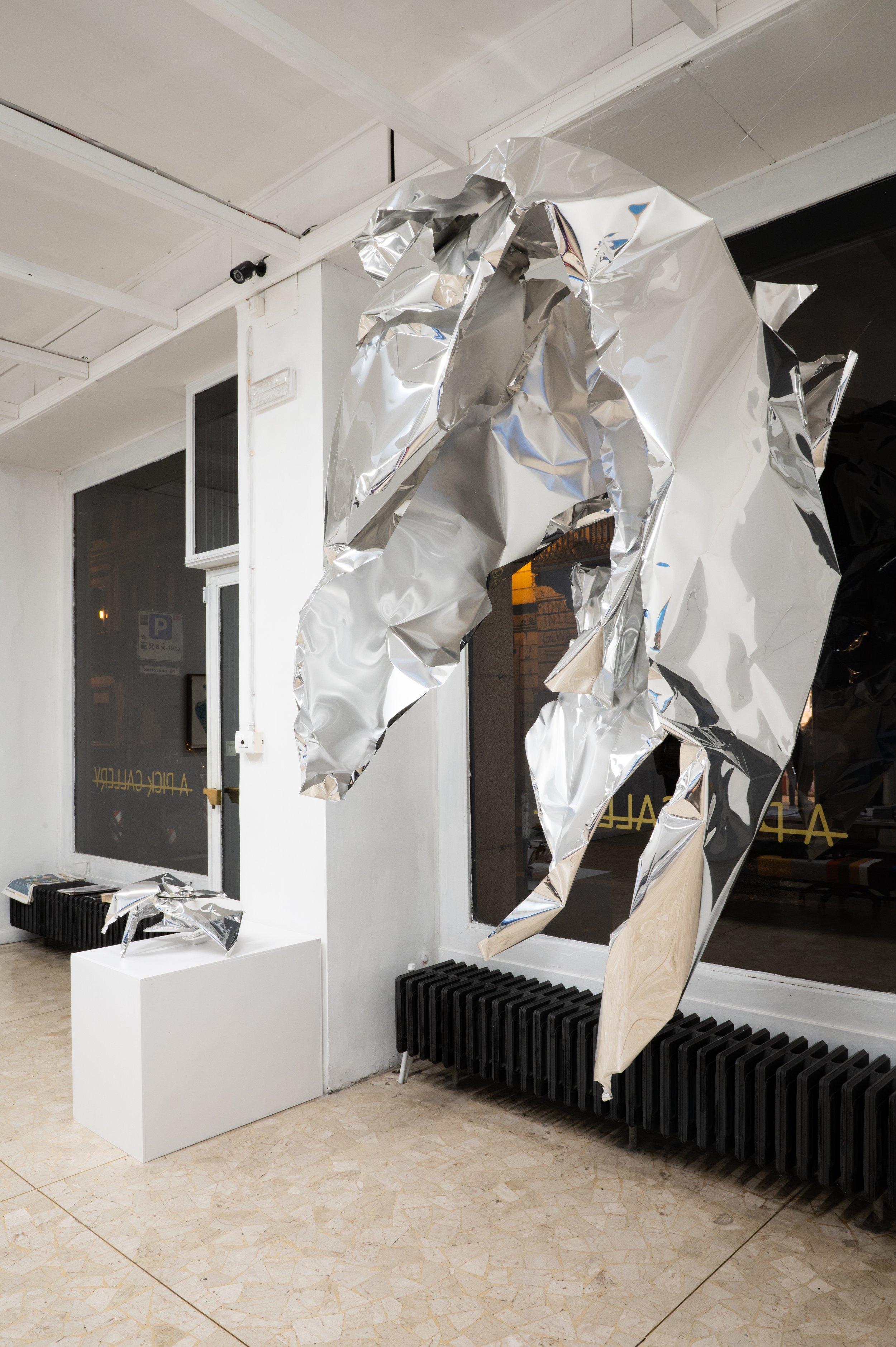
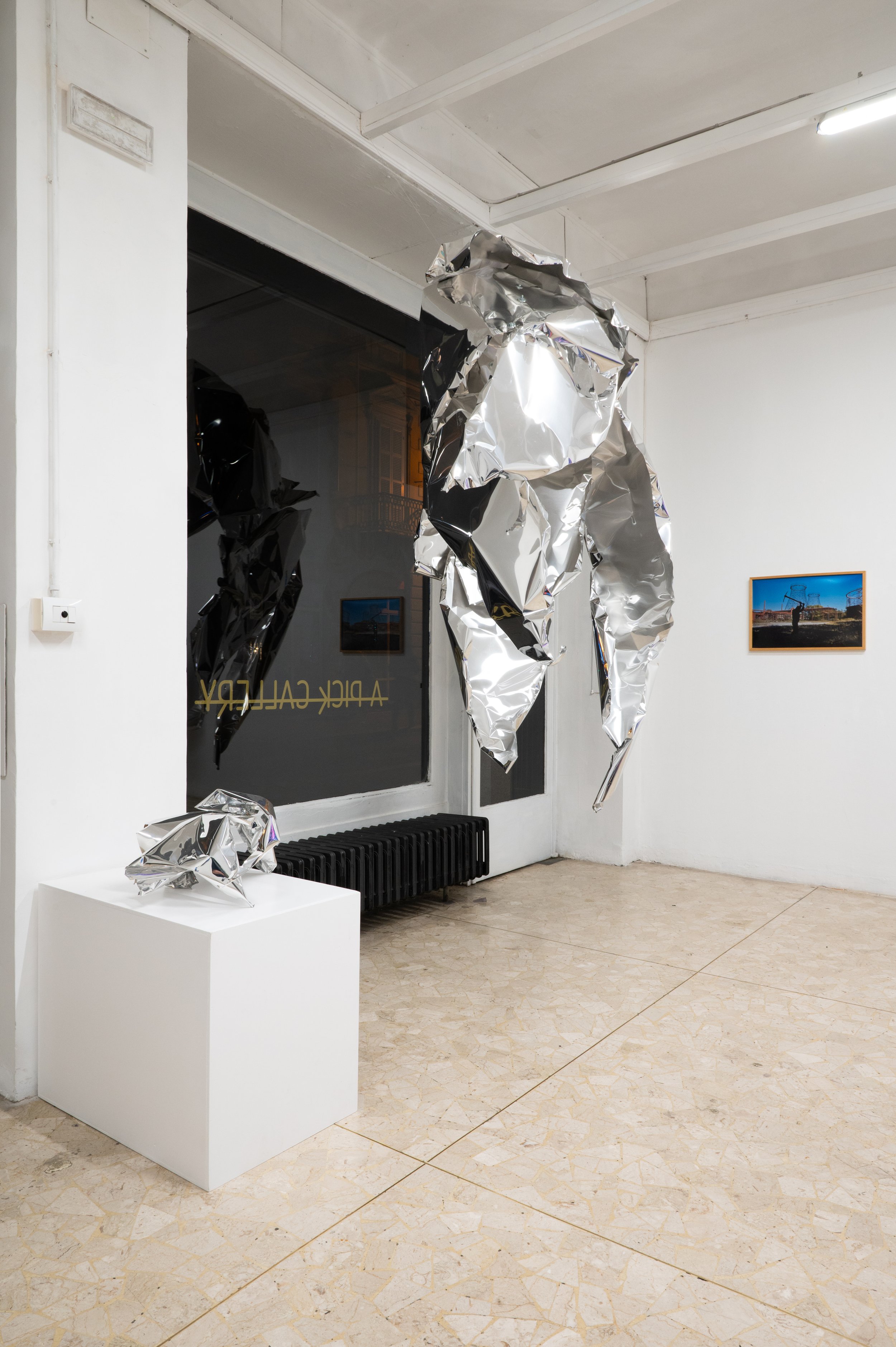
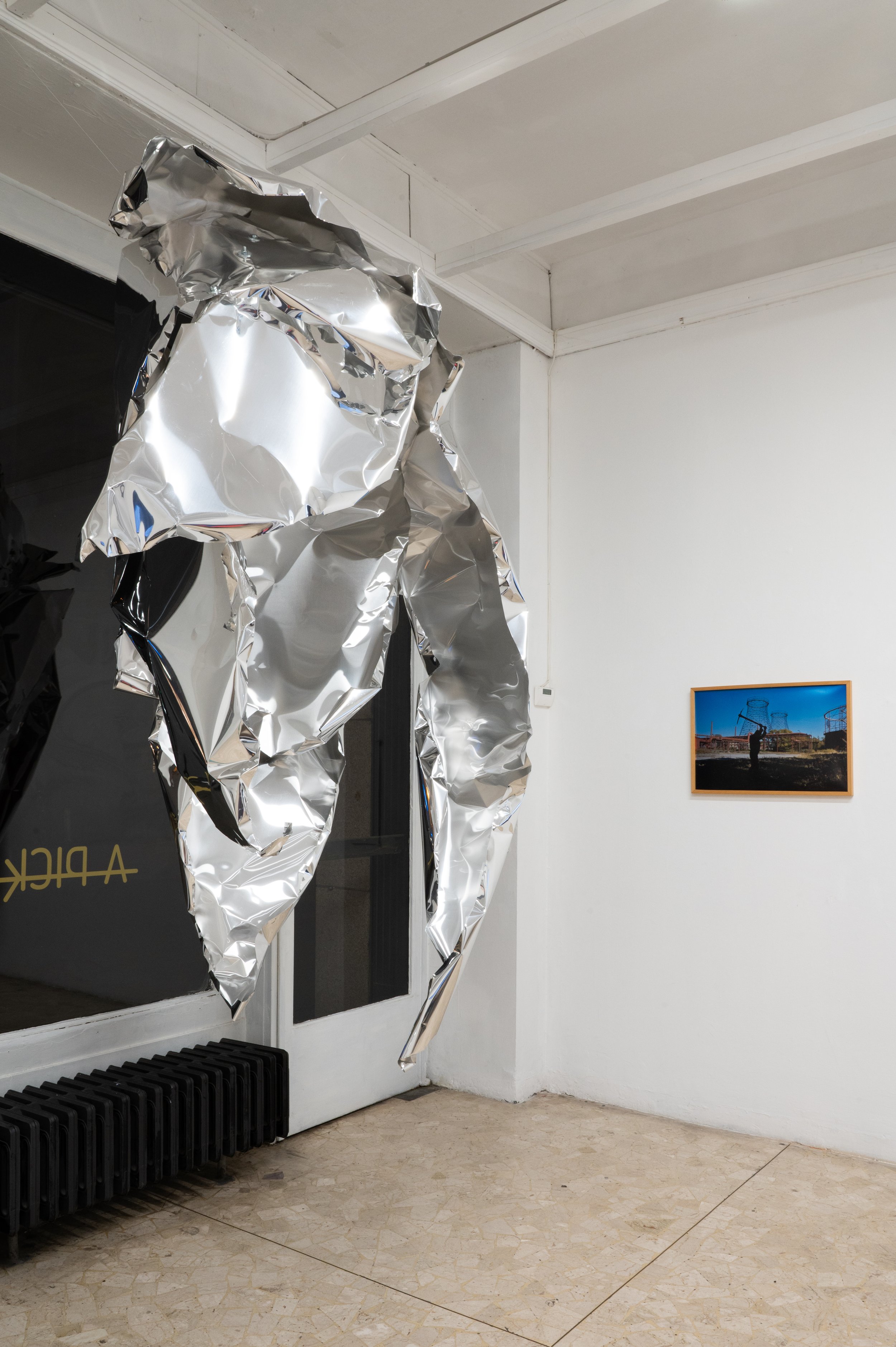
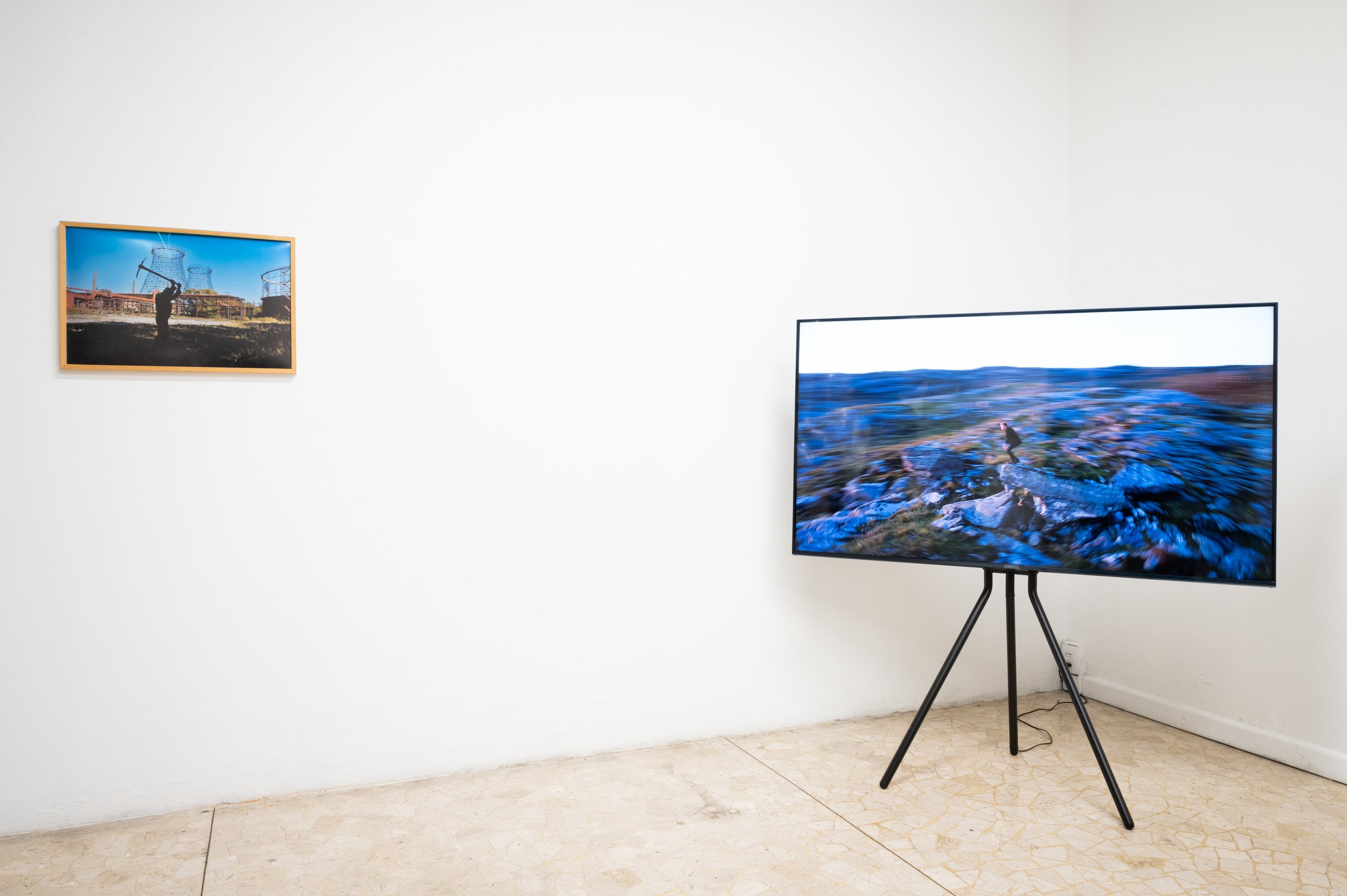
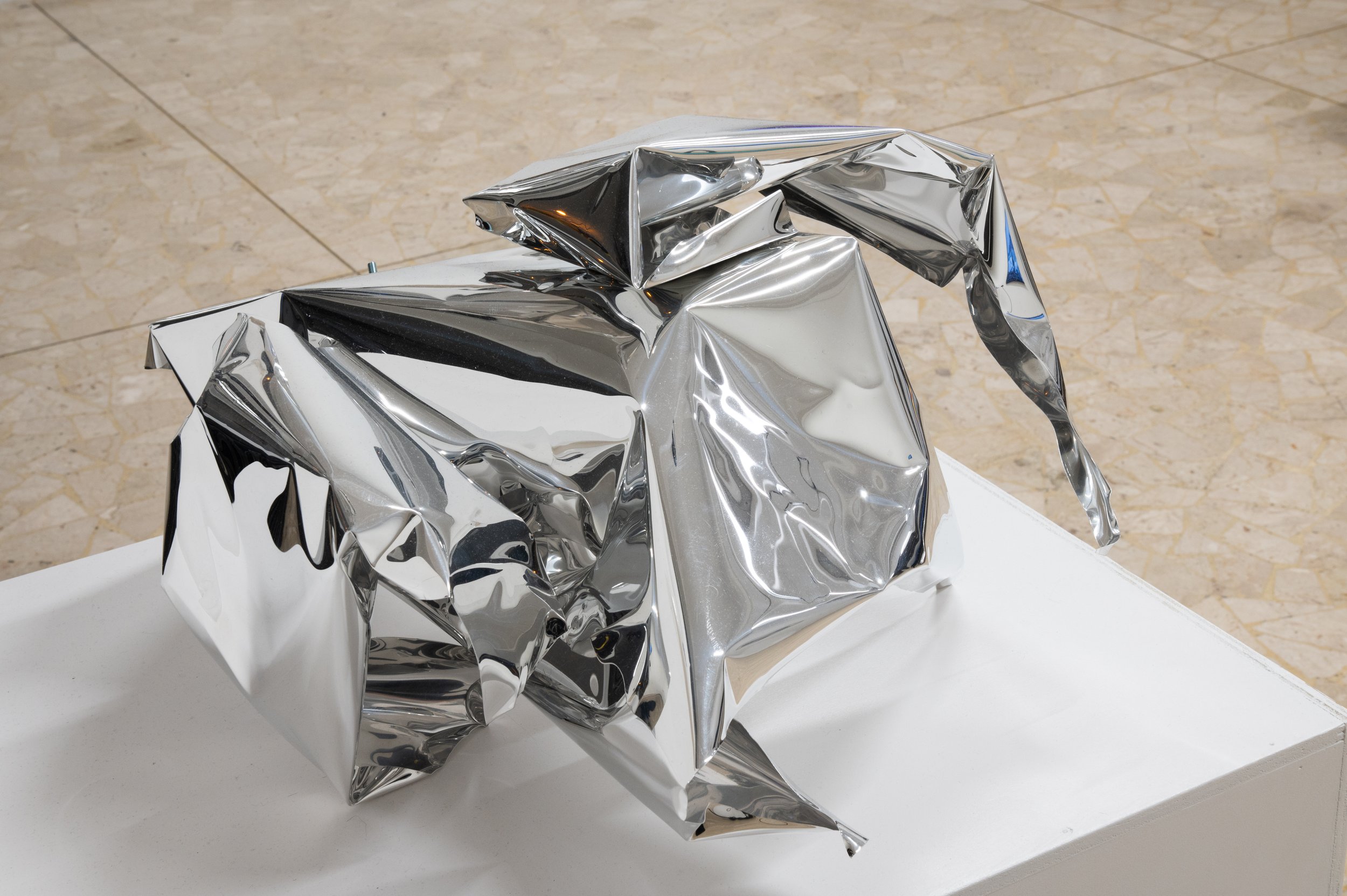
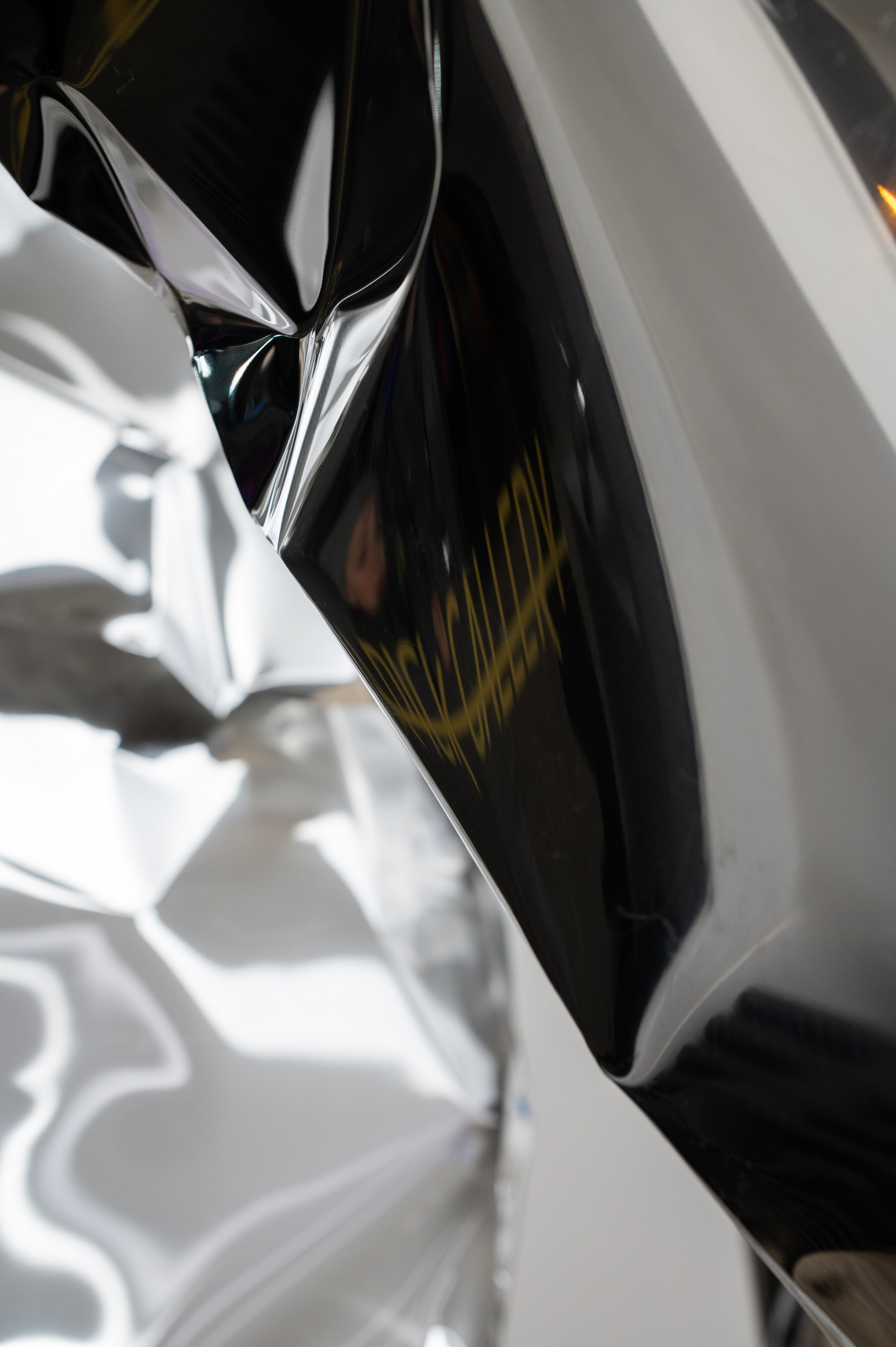
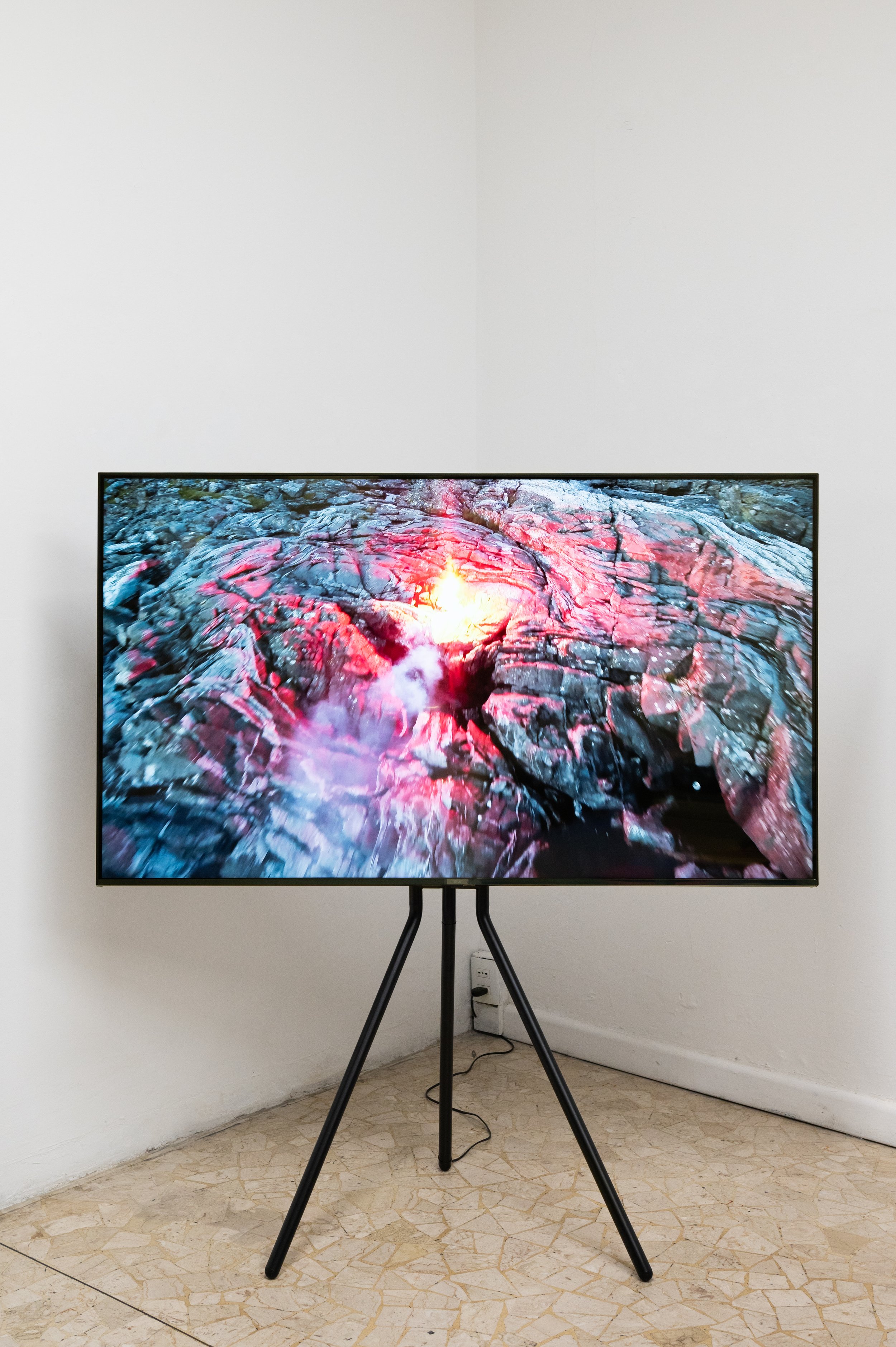
Your Custom Text Here
ON MATTER AND ENERGY
Hannah Rowan Stafano Cagol duo show A Pick Gallery Turin, curated by C+N Canepaneri, 2023.
Two artists who resonate on the same wavelength, despite their differences, Stefano Cagol (Trento, 1969) and Hannah Rowan (Brighton, 1990), exhibit together for the first time in a poetic yet alarming display. Their work delves into the capacity to engage with the elements and the spirit of the elements. Both have tackled the transformations of matter as the origin of current environmental issues and societal crises, starting with water, an essential element for all living beings, and the loss of ice. Rowan aligns with the principles of hydrofeminism, while Cagol is known for his renowned piece The Ice Monolith, left to melt at the Venice Biennale in 2013, coinciding with the release of Timothy Morton's "Hyperobjects," leading to discussions about floods and humans as a flood. In the exhibition, Cagol and Rowan each present a recent impactful video work and a series of installation pieces. Both artists are represented by C+N Gallery CANEPANERI (Milan/Genoa, Italy).
The title of Hannah Rowan's video work, Tides in the Body, is a quote from Virginia Woolf, also used by hydrofeminist Astrida Neimanis, author of "Bodies of Water: Posthuman Feminist Phenomenology." The English artist explores our intricate relationship with water, geological and ecological systems, venturing into the far north, the seas of Greenland, where she bravely – yet perilously – stands on an iceberg. "I wanted to learn about ice through the seeping form of my fleshy body, ice against skin, membrane against membrane. The ice was slippery," she writes in her diary, recalling those moments. She continues, "As I lay with my left ear pressed against the hard, cold surface and my eyes turned towards theocean, I could feel the internal movement of the ice. I listened to the digestive gurgles of the ice being metabolized by contact with the warmer seawater and the air temperature." Rowan then stops on the coast and embraces a block of ice, naked, vulnerable, yet in total harmony, embodying a maternal protective stance toward our water reserves and our future.
On the other hand, Stefano Cagol has repeatedly used fire as a symbol of our antagonistic attitude toward nature, our desire for dominance, and anthropogenic influence on global warming and ice disappearance. In the exhibition, we find the video work "Far Before and After Us," created for last year's Venice Biennale, in the Perak-Malaysia state pavilion, where the artist ignites a torch in a snowy, rugged mountain landscape, reminiscent of ancient geological eras preceding human presence, opening up to a possible future beyond us. "Cagol has developed his own theories," as Elisa Barison notes in a recent essay dedicated to the artist's research. "He is convinced that the birth of the Anthropocene can be equated with our ancestors' discovery of fire. At that moment, humans began to rise above other living beings and gained the ability to manipulate, transform matter, and thus produce much more energy than they biologically need to survive."
ON MATTER AND ENERGY
Hannah Rowan Stafano Cagol duo show A Pick Gallery Turin, curated by C+N Canepaneri, 2023.
Two artists who resonate on the same wavelength, despite their differences, Stefano Cagol (Trento, 1969) and Hannah Rowan (Brighton, 1990), exhibit together for the first time in a poetic yet alarming display. Their work delves into the capacity to engage with the elements and the spirit of the elements. Both have tackled the transformations of matter as the origin of current environmental issues and societal crises, starting with water, an essential element for all living beings, and the loss of ice. Rowan aligns with the principles of hydrofeminism, while Cagol is known for his renowned piece The Ice Monolith, left to melt at the Venice Biennale in 2013, coinciding with the release of Timothy Morton's "Hyperobjects," leading to discussions about floods and humans as a flood. In the exhibition, Cagol and Rowan each present a recent impactful video work and a series of installation pieces. Both artists are represented by C+N Gallery CANEPANERI (Milan/Genoa, Italy).
The title of Hannah Rowan's video work, Tides in the Body, is a quote from Virginia Woolf, also used by hydrofeminist Astrida Neimanis, author of "Bodies of Water: Posthuman Feminist Phenomenology." The English artist explores our intricate relationship with water, geological and ecological systems, venturing into the far north, the seas of Greenland, where she bravely – yet perilously – stands on an iceberg. "I wanted to learn about ice through the seeping form of my fleshy body, ice against skin, membrane against membrane. The ice was slippery," she writes in her diary, recalling those moments. She continues, "As I lay with my left ear pressed against the hard, cold surface and my eyes turned towards theocean, I could feel the internal movement of the ice. I listened to the digestive gurgles of the ice being metabolized by contact with the warmer seawater and the air temperature." Rowan then stops on the coast and embraces a block of ice, naked, vulnerable, yet in total harmony, embodying a maternal protective stance toward our water reserves and our future.
On the other hand, Stefano Cagol has repeatedly used fire as a symbol of our antagonistic attitude toward nature, our desire for dominance, and anthropogenic influence on global warming and ice disappearance. In the exhibition, we find the video work "Far Before and After Us," created for last year's Venice Biennale, in the Perak-Malaysia state pavilion, where the artist ignites a torch in a snowy, rugged mountain landscape, reminiscent of ancient geological eras preceding human presence, opening up to a possible future beyond us. "Cagol has developed his own theories," as Elisa Barison notes in a recent essay dedicated to the artist's research. "He is convinced that the birth of the Anthropocene can be equated with our ancestors' discovery of fire. At that moment, humans began to rise above other living beings and gained the ability to manipulate, transform matter, and thus produce much more energy than they biologically need to survive."